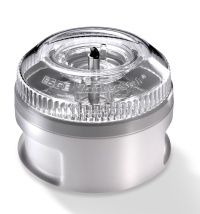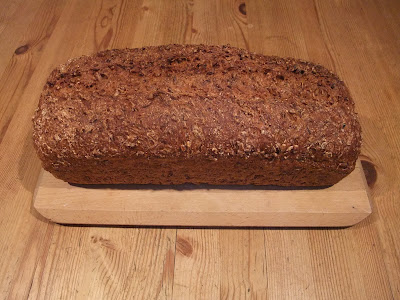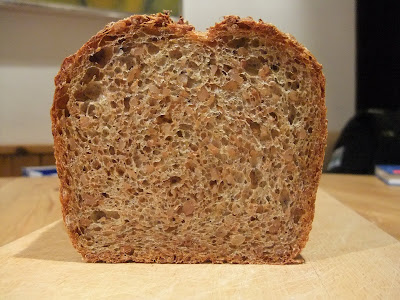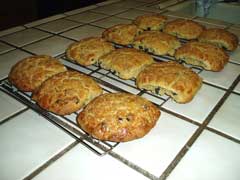100 % sprouted grains? 'Sounds great and interesting', I said to myself and printed the Recipe of Reinhart's Whole Grain Breads a couple weeks ago. This weekend I gave it a try.
I sprouted my grains as indicated. They all had cute little white tails and were pleasant to chew. I would have better kept them as a addition to my breakfast cereals instead of trying to make them into a bread.
"grind the grains into a pulp as fine as possible. If the grains warm up to much, let them rest for ten minutes and continue when cooled. A meat grinder works even better" - That's what Reinhart wrote. I should have been an english native to know what exactly a food processor is. I tried everything, and everything failed.
 my kenwood mixer . . .
my kenwood mixer . . .
 the mixer which normally fixes everything, the legendary bamix . . .
the mixer which normally fixes everything, the legendary bamix . . .  The bamix addon grinder . . .
The bamix addon grinder . . .
 even the kenwood grater . . .
even the kenwood grater . . .
 and last but not least, in desperation, I tried it with a passevite.
and last but not least, in desperation, I tried it with a passevite.
I fought about an hour, ended up with my bamix. All the other things blocked because of this doughy/grainy mass. My bamix just got very hot, so I decided to call it for good, even though there were still some whole grains. I added yeast, honey, salt, water and Vital Wheat Gluten, then fermentation, shaping, proofing, baking, cooling, slicing.
The result of this struggle? My bamix is somewhat weird. The exchangeable blades are very hard to remove and to put on again. (I hope my mom won't find out.) I washed kitchen equipment for about an hour. And I've got a bread which is jar-muscle-excercise. It is light, but the grains . . . Flavorwise, it's just bread. seriously, I had much better whole grain breads. I don't notice an exciting difference trough the sprouting and because of the considerable amount of yeast added, no other interesting flavors emerged. Even my family noticed a "lack" in flavor compared to other breads I bake.
You wan't to see pictures?I know the bread looks decent, but before you try it: Think about what gear you've got. 

Salome









 my kenwood mixer . . .
my kenwood mixer . . . the mixer which normally fixes everything, the legendary bamix . . .
the mixer which normally fixes everything, the legendary bamix . . .  The bamix addon grinder . . .
The bamix addon grinder . . . even the kenwood grater . . .
even the kenwood grater . . . and last but not least, in desperation, I tried it with a passevite.
and last but not least, in desperation, I tried it with a passevite.
